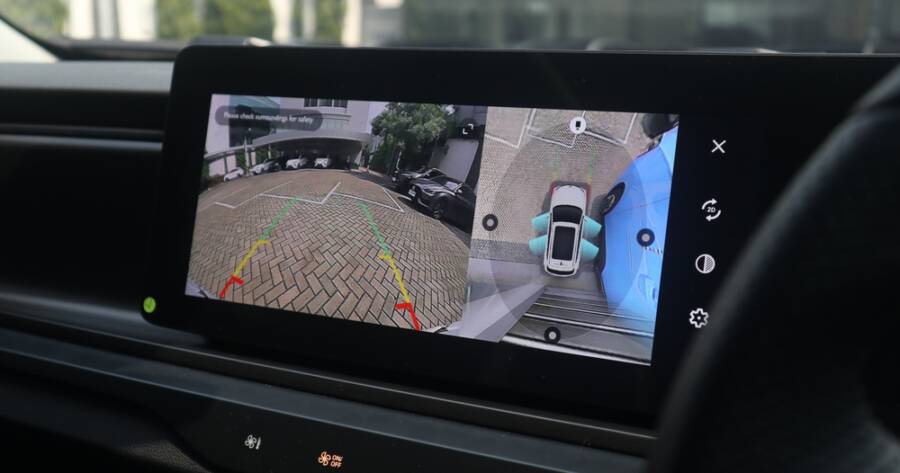Today’s SUVs come packed with features designed to help you drive safer, no matter the road conditions. With technology evolving quickly, many systems once found only in luxury vehicles are now common in everyday models. If you’re considering a new SUV, knowing what safety features to expect can help you choose with more confidence.
Automatic Emergency Braking Is Becoming the Norm
One of the most important developments in recent SUV design is automatic emergency braking (AEB). This system watches the road ahead using cameras and sensors. If it senses an imminent crash, it can alert the driver and apply the brakes to help avoid or lessen the impact.
Many automakers include AEB as standard equipment in their newer SUVs, especially in response to industry guidelines and consumer demand. The system works best in low-speed situations, like city driving, but some models now also include high-speed and pedestrian detection versions. AEB is part of a growing push to reduce accidents before they happen, not just lessen damage after a crash.
Blind Spot Monitoring and Rear Cross-Traffic Alerts Keep You Aware
Another vital safety feature in new SUVs is blind spot monitoring. This system keeps an eye on areas that are hard to see in your mirrors. If a car enters that space, a warning light will flash on the side mirror or an audible alert may sound. It’s especially useful on highways or during lane changes.
Rear cross-traffic alert works in parking situations. When you’re backing out of a spot, the system scans for cars or people approaching from the sides. This can help prevent fender-benders in busy lots. These technologies help reduce stress during everyday driving and give added confidence when moving a larger vehicle like an SUV.
Lane-Keeping Systems Help Prevent Drift
Lane departure warning and lane-keeping assist are also becoming standard in more models. These systems track the lines on the road. If your SUV begins to drift without a turn signal, the vehicle may give a gentle steering correction or vibrate the wheel to get your attention.
Some advanced systems, often called lane centering assist, go a step further. They actively keep your SUV in the middle of the lane, especially during highway cruising. While these features don’t replace driver attention, they can reduce fatigue on long drives and prevent unintended swerves or lane changes.
Adaptive Cruise Control Offers Smarter Driving Support
Traditional cruise control holds your speed steady. Adaptive cruise control (ACC) takes it a step further. It uses radar and cameras to maintain a safe distance from the car in front. If traffic slows, your SUV slows down too. Once the road clears, the system returns to your preset speed.
ACC is a favorite feature for commuters and travelers alike. Some systems even bring your SUV to a full stop in traffic and resume movement without driver input. This smooth handling is part of what’s often referred to as “semi-automated” driving. Again, it’s not self-driving, but it does help reduce driver workload.
Surround-View and Backup Cameras Increase Visibility
Backup cameras have been required in all new cars and SUVs sold in the U.S. since 2018. But newer SUVs take this further with surround-view camera systems. These provide a bird’s-eye view of your vehicle and the area around it using multiple cameras stitched into one screen.
This is extremely helpful when parking in tight spaces or maneuvering around obstacles. Some systems even include guidelines or object detection that help guide you in and out safely. For SUV drivers who often deal with limited rear visibility due to the vehicle’s size, these cameras are more than a luxury—they’re a useful safety tool.
A Growing Focus on Passenger and Pedestrian Protection
Modern SUV safety isn’t only about preventing crashes. It’s also about reducing harm when accidents do happen. New models often include better airbag coverage, such as knee airbags or rear-seat side airbags. Crumple zones and stronger body frames are designed to absorb energy during a collision.
SUVs are also being built to protect those outside the vehicle. Some now feature front-end designs that are more forgiving to pedestrians in the event of an accident. Combined with pedestrian detection systems, this shows that safety tech today considers everyone on the road.
Safety That Serves Everyone in the SUV
Today’s SUVs are built with safety in mind from bumper to bumper. Whether you’re driving to work, taking a road trip, or picking up the kids, advanced safety features can offer peace of mind.
As these systems become more widespread, it’s important to know what’s standard and what’s optional. Understanding these features helps you shop smarter and choose an SUV that truly meets your safety needs.

